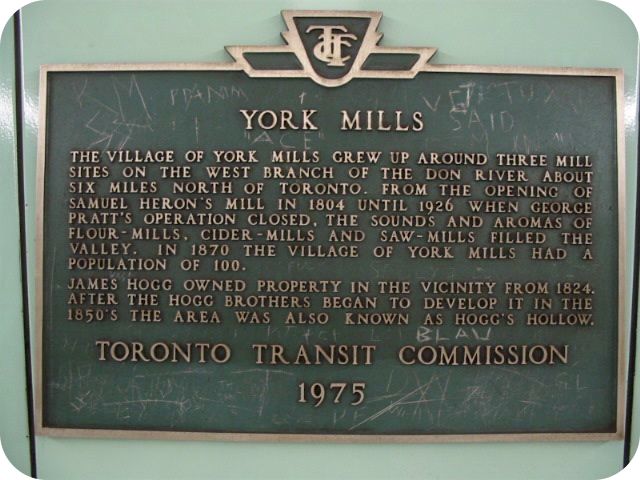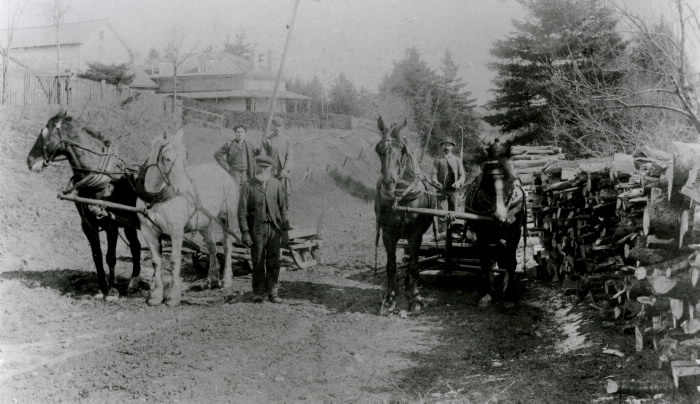

As the pioneer farmers continued to push the treeline back from Yonge Street, they were faced with a persistent problem: how to turn the fallen trees into lumber.
Without any nearby mills, the best option was ‘pit-sawing’. It meant digging a trench and placing a platform at the top. A two-handled whipsaw — taller than a man – was used to cut the log. One unlucky farmer took his position in the pit at one end of the saw. When the work began, he would be covered in sawdust. The other farmer, on the platform, had to be skilled enough to keep the saw-cut aligned to a chalk mark on the log.
It was hot, sticky, back-breaking work. If they were lucky, the farmers might be able to cut 25 boards before sunset.
One can imagine the neighbourhood elation when the first sawmill was built down in the hollow to the north. The spot where Yonge Street crossed Big Creek (now the West Don River at Donino Avenue and Mill Street, behind the Miller Restaurant) was an ideal spot for such a mill. It boasted a flat area near the creek that could be excavated to create a millpond; perfect for creating water pressure and for storing logs.
Samuel Heron, a Toronto merchant, had owned the property and planned to build a mill. Financial problems forced him to sell his 200 acres, but he managed to strike an arrangement with the new owner to build the mill.
Now there was somebody else to do the sawing. However, hauling the logs to the mill was no easy task. Yonge Street was still infested with tree stumps and muck. Oxen dragging their load down the hill to the valley (winding down Donwood Avenue to Donino) had to tread carefully.
As usually happened at sawmill sites, Heron took advantage of the water pressure and the readily available timber to build a grist mill. Farmers could now bring their grain to Heron who would grind it into flour.
In 1811, Heron added a still to his collection of buildings at Heron’s Bridge. That meant farmers could exchange their poor quality grain for whiskey. Mill owners were always on the lookout for distillers who could coax the most alcohol from a bag of grain.
Over time, the Heron mills fell into disrepair. A newer grist mill was built to the north. It was later purchased by James Hogg, who called the area York Mills. That may have been his official name for it — many locals referred to it as Hogg’s Hollow.
Grist mills were part of the York Mills landscape until 1959 when the last one – vacant for 23 years – was torn down. Hurricane Hazel wiped out the millpond in the 1954. Only a large millstone remains, wedged in the grass near the river at Donino and Mill.
Gary Schlee has been a resident of Bedford Park since 1991. As an author and historian, he has written many articles about the history of our area, notably from 2003-2012, for Community Life published by Fairlawn Avenue United Church (FAUC). This article originally appeared in the Spring 2005 issue. BPRO is grateful to Gary and FAUC for kindly and generously authorizing us to reprint these articles on our website. Please come back regularly to see additional articles as we post them.
